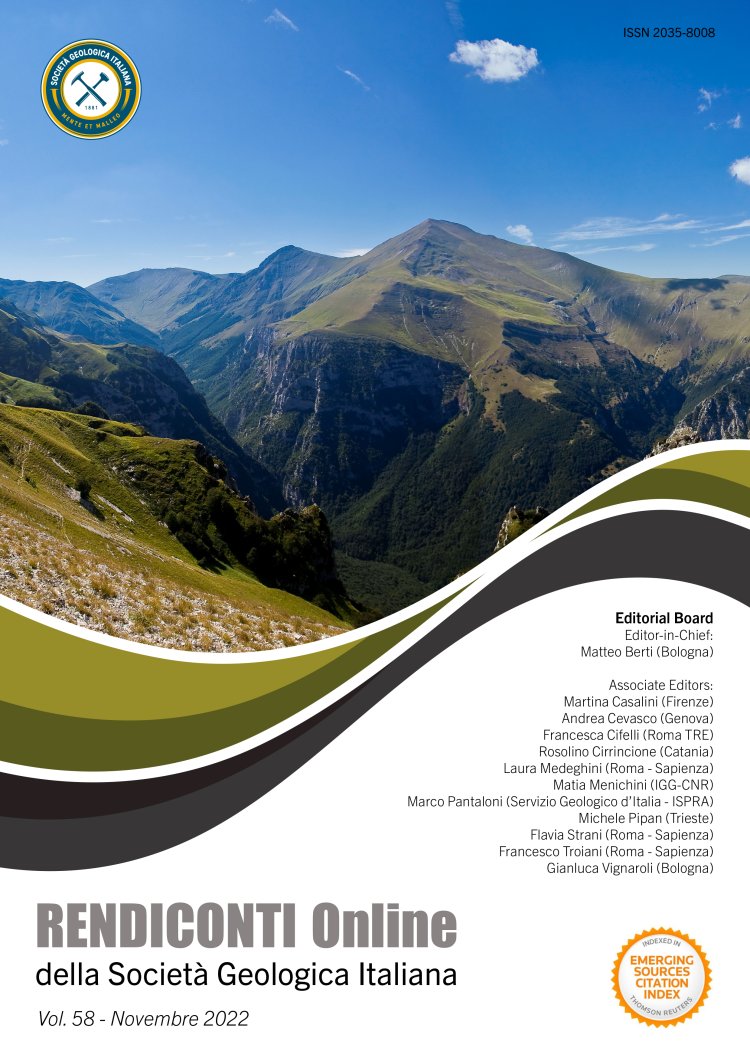
Assessing debris-flow activity and geomorphic changes caused by an extreme rainstorm: the case study of the Liera catchment (Dolomites, northeastern Italy)
Giorgia Macchi1, Stefano Crema1, Luciano Arziliero2, Gabriella Boretto1,3, Barbara De Fanti4, Lorenzo Marchi1, Giovanni Monegato5 & Marco Cavalli1
1CNR IRPI, Corso Stati Uniti 4, 35127 Padova, Italy.
2Regione Emilia-Romagna - Agenzia Regionale per la Sicurezza Territoriale e la Protezione Civile, V. le Cavour 77, 44121 Ferrara, Italy.
3CONICET, Av. Vélez Sársfield 1611, X5016CGA, Ciudad Universitaria, Córdoba, Argentina.
4Regione Veneto – Direzione Difesa del Suolo e della Costa, Palazzo Linetti, Calle Priuli 99, 30121 Venezia, Italy.
5CNR IGG, Via Gradenigo 6, 35131 Padova, Italy.
Corresponding author e-mail: marco.cavalli@irpi.cnr.it
Volume: 58/2022
Pages: 2-8
Abstract
Collecting information on sediment source areas and mobilized sediment volume is a fundamental step toward a better understanding of geomorphic changes caused by extreme events. This study aims to analyze the morphological changes caused by debris flows in a mountain catchment from both a quantitative (volume changes) and qualitative (spatial patterns of erosion and deposition) perspective in a catchment of the Dolomites (Liera catchment, 37.7 km2), which was severely affected by the Vaia storm (27th - 30th October 2018). The study of the geomorphic impacts of the Vaia storm in the Liera catchment, which was carried out in the frame of the Interreg SedInOut project (2019-2022), includes: (i) the creation and comparison of pre- (2015) and post-event (2019) sediment sources inventories, (ii) the analysis of landforms evolution and, leveraging the availability of multitemporal high-resolution DTMs, (iii) the quantification of sediment volumes mobilized by debris-flows. The results show a substantial increase in sediment sources (mostly shallow landslides and debris-flow channels). Large sediment volumes were eroded and transported by debris flows, but the supply of sediment to the main channel was rather limited because most of the sediment was deposited on the alluvial fans of debris-flow channels.
Keywords
Get Full Text